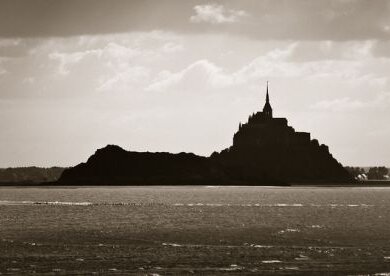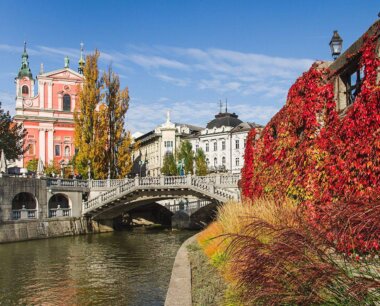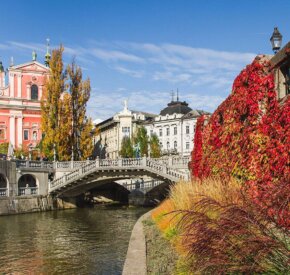
Three alternative weekends in Europe
Some alternative ideas for that spare weekend on the horizon
GERMANY
From the Ach to the Blau
The Germans are pretty good at cross-country cycle routes, and this one is particularly scenic, running as it does through wooded river valleys to the north of the Danube.
Ulm, the starting-point of this itinerary, is not Germany’s prettiest city which, unfortunately, is our fault for bombing it to smithereens in the Second World War. But much of it has been carefully rebuilt – and there’s a bicycle-rental shop right by Ulm’s main railway station.
Once you’ve sorted your bike, board the train to Riedlingen. Here you’ll find a cobbled altstadt (old town) full of gabled and shuttered houses in a tight fist of alleys on the flank of a hill by the Danube, still little more than an oversized stream at this point.
The cycle-path distance from here back to Ulm is just under 70km, do-able in a day if you worked hard. But take it slowly; there are plenty of pensions en route. From Riedlingen, the path runs beside the river; after 30-something km it’ll bring you into Ehingen, another handsome place with a schloss (castle) and a big market square.
From Ehingen you need to find the Blautal cycle route, heading for Blaubeuren – yet another fetching town, with carefully preserved 15th-century architecture threaded by the Ach, running in canals. But the big attraction is the Blautopf. This is where the River Blau emerges effortlessly from a hole in the ground, so deep you can’t see the bottom.
The resulting Blautopf is a shimmering, azure lagoon surrounded by woodland, so calm that you’d never believe it’s filling (and flowing) at as much as 32,000 litres per second.
From Blaubeuren it’s an easy pastoral ride back to Ulm along the banks of the Blau, which by now has absorbed the Ach with no signs of indigestion.
FRANCE
Winter on Mont St Michel
For most of the year the narrow lanes of this 11th-century Gothic masterpiece are gummed solid with tourists. Far better to come when the rain howls around its monastic walls and tourists are outnumbered by seabirds seeking shelter.
The experience begins in Portsmouth, from where Brittany Ferries sail overnight for St Malo. Next morning it’s a short tootle to the Mont. Within the walls, one main lane winds up through a medieval village of beamed and gabled inns, restaurants and souvenir shops – some open all year – emerging eventually at the abbey itself. From here there’s a huge view of the draining bay covered in stripes of water, and you can watch for the incoming tide, described by Victor Hugo as moving with the speed of galloping horses.
At its peak, 500 years ago, there were 60 resident Benedictine monks – today there are just two. The island’s religious element has been swamped by commercial tourism, and only wintertime restores some of its original identity. The huge fortified abbey is impressive in any season, but more so with a wind whistling around and with only gargoyles for company.
Most visitors spend an hour in the abbey, buy their souvenirs and leave, but you’ve come in winter, and you’re here to stay. Two or three of the hotels down by the main gate will be pleased to offer you a room, and the lanes outside will be deserted as soon as night falls. Snatcha moment, however, to venture out onto the causeway after dark. The island is at its visual best from here, lit up from skirt to spire like a Gothic rocket straining at its earthy foundations in a vain attempt to get to heaven.
SCOTLAND
The 21.15 to Rannoch Moor
Take the smog-to-bog sleeper train to Britain’s greatest wilderness, allowing you to fall asleep in the suburbs of London and wake up on Scotland’s Rannoch Moor. No roads dare to cross the bog and rock but the London to Fort William railway line weaves right through it.
There’s a choice of two stations on the moor – Corrour or Rannoch. At Rannoch there’s a proper hotel, the Moor of Rannoch. The bar sells beers brewed by monks and Orkney fishermen, and a couple of the guest beds are mounted on weather-beaten thrones made out of old deer fences from the moor. Expect open fires year round and a venison stew slow-cooking on the Aga.
Outside you can walk forever, particularly on the Road to the Isles, a former drover’s track, which keeps to high (and dry) ground, and goes all the way to Ullapool. Climb up one of the hills and look back. From
a distance, the lochs appear to be bits of sky fallen to ground. The occasional train looks like a metal caterpillar crawling across the moor’s face. Think of it as a Priory for those who believe in purification by isolation.
Extracts adapted from Andrew Eames’ book Something Different for the Weekend (Bradt)
FRANCE
Winter on Mont St Michel
For most of the year the narrow lanes of this 11th-century Gothic masterpiece are gummed solid with tourists. Far better to come when the rain howls around its monastic walls and tourists are outnumbered by seabirds seeking shelter.
The experience begins in Portsmouth, from where Brittany Ferries sail overnight for St Malo. Next morning it’s a short tootle to the Mont. Within the walls, one main lane winds up through a medieval village of beamed and gabled inns, restaurants and souvenir shops – some open all year – emerging eventually at the abbey itself. From here there’s a huge view of the draining bay covered in stripes of water, and you can watch for the incoming tide, described by Victor Hugo as moving with the speed of galloping horses.
At its peak, 500 years ago, there were 60 resident Benedictine monks – today there are just two. The island’s religious element has been swamped by commercial tourism, and only wintertime restores some of its original identity. The huge fortified abbey is impressive in any season, but more so with a wind whistling around and with only gargoyles for company.
Most visitors spend an hour in the abbey, buy their souvenirs and leave, but you’ve come in winter, and you’re here to stay. Two or three of the hotels down by the main gate will be pleased to offer you a room, and the lanes outside will be deserted as soon as night falls. Snatcha moment, however, to venture out onto the causeway after dark. The island is at its visual best from here, lit up from skirt to spire like a Gothic rocket straining at its earthy foundations in a vain attempt to get to heaven.
SCOTLAND
The 21.15 to Rannoch Moor
Take the smog-to-bog sleeper train to Britain’s greatest wilderness, allowing you to fall asleep in the suburbs of London and wake up on Scotland’s Rannoch Moor. No roads dare to cross the bog and rock but the London to Fort William railway line weaves right through it.
There’s a choice of two stations on the moor – Corrour or Rannoch. At Rannoch there’s a proper hotel, the Moor of Rannoch. The bar sells beers brewed by monks and Orkney fishermen, and a couple of the guest beds are mounted on weather-beaten thrones made out of old deer fences from the moor. Expect open fires year round and a venison stew slow-cooking on the Aga.
Outside you can walk forever, particularly on the Road to the Isles, a former drover’s track, which keeps to high (and dry) ground, and goes all the way to Ullapool. Climb up one of the hills and look back. From
a distance, the lochs appear to be bits of sky fallen to ground. The occasional train looks like a metal caterpillar crawling across the moor’s face. Think of it as a Priory for those who believe in purification by isolation.
Extracts adapted from Andrew Eames’ book Something Different for the Weekend (Bradt)
SCOTLAND
The 21.15 to Rannoch Moor
Take the smog-to-bog sleeper train to Britain’s greatest wilderness, allowing you to fall asleep in the suburbs of London and wake up on Scotland’s Rannoch Moor. No roads dare to cross the bog and rock but the London to Fort William railway line weaves right through it.
There’s a choice of two stations on the moor – Corrour or Rannoch. At Rannoch there’s a proper hotel, the Moor of Rannoch. The bar sells beers brewed by monks and Orkney fishermen, and a couple of the guest beds are mounted on weather-beaten thrones made out of old deer fences from the moor. Expect open fires year round and a venison stew slow-cooking on the Aga.
Outside you can walk forever, particularly on the Road to the Isles, a former drover’s track, which keeps to high (and dry) ground, and goes all the way to Ullapool. Climb up one of the hills and look back. From
a distance, the lochs appear to be bits of sky fallen to ground. The occasional train looks like a metal caterpillar crawling across the moor’s face. Think of it as a Priory for those who believe in purification by isolation.
Extracts adapted from Andrew Eames’ book Something Different for the Weekend (Bradt)




















